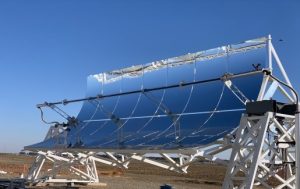The economics of concentrated solar panel efficiency has been a topic of great interest in recent years, as the world seeks to transition to more sustainable and renewable energy sources. The cost-benefit analysis of this technology is essential in determining its viability and potential for widespread adoption. As the global community continues to grapple with the effects of climate change, concentrated solar power (CSP) has emerged as a promising solution to reduce greenhouse gas emissions and meet the increasing demand for electricity.
Concentrated solar power systems use mirrors or lenses to focus sunlight onto a small area, generating heat that can be used to produce electricity. This concentrated heat can be stored and used to generate power even when the sun is not shining, making CSP a more reliable and consistent energy source compared to traditional photovoltaic solar panels. The efficiency of these systems is a critical factor in determining their economic viability, as higher efficiency translates to more electricity generated per unit of sunlight, ultimately lowering the cost of electricity production.
One of the primary advantages of CSP technology is its ability to store energy in the form of heat, which can be converted into electricity at a later time. This energy storage capability allows CSP plants to provide power on-demand, even during periods of low sunlight or at night. This feature is particularly valuable in regions with high electricity demand during peak hours, as it can help to reduce the need for expensive and polluting fossil fuel-based power plants. Additionally, the ability to store energy enables CSP plants to maintain a stable and consistent power output, making them an attractive option for grid operators seeking to integrate more renewable energy sources into their systems.
However, the cost of building and operating CSP plants remains a significant barrier to their widespread adoption. The initial capital investment required for CSP projects is typically higher than that of other renewable energy technologies, such as photovoltaic solar panels or wind turbines. This is due in part to the complex and specialized nature of CSP systems, which require large-scale infrastructure and advanced materials to function effectively. Furthermore, the ongoing costs of operating and maintaining CSP plants can be substantial, particularly in terms of mirror or lens cleaning and replacement.
Despite these challenges, recent advancements in CSP technology have led to significant improvements in efficiency and cost reduction. For example, the development of advanced materials and coatings has increased the ability of mirrors and lenses to capture and concentrate sunlight, resulting in higher overall system efficiency. Additionally, innovations in thermal energy storage systems have allowed for more efficient and cost-effective storage of heat, further enhancing the overall performance of CSP plants.
The cost-benefit analysis of concentrated solar panel efficiency ultimately depends on a variety of factors, including the specific technology used, the location of the plant, and the availability of government incentives and subsidies. In regions with abundant sunlight and high electricity prices, CSP can be a highly competitive option for power generation. Moreover, as the technology continues to advance and economies of scale are achieved, the cost of CSP is expected to decline, making it an increasingly attractive option for investors and policymakers alike.
In conclusion, the economics of concentrated solar panel efficiency is a complex and evolving subject, with numerous factors influencing the overall cost-benefit analysis. While the initial capital investment and ongoing operational costs of CSP plants can be significant, the potential for increased efficiency, energy storage capabilities, and reduced greenhouse gas emissions make this technology a promising option for the future of renewable energy. As advancements in technology continue to drive down costs and improve performance, concentrated solar power has the potential to play a critical role in the global transition to a more sustainable and low-carbon energy system.



